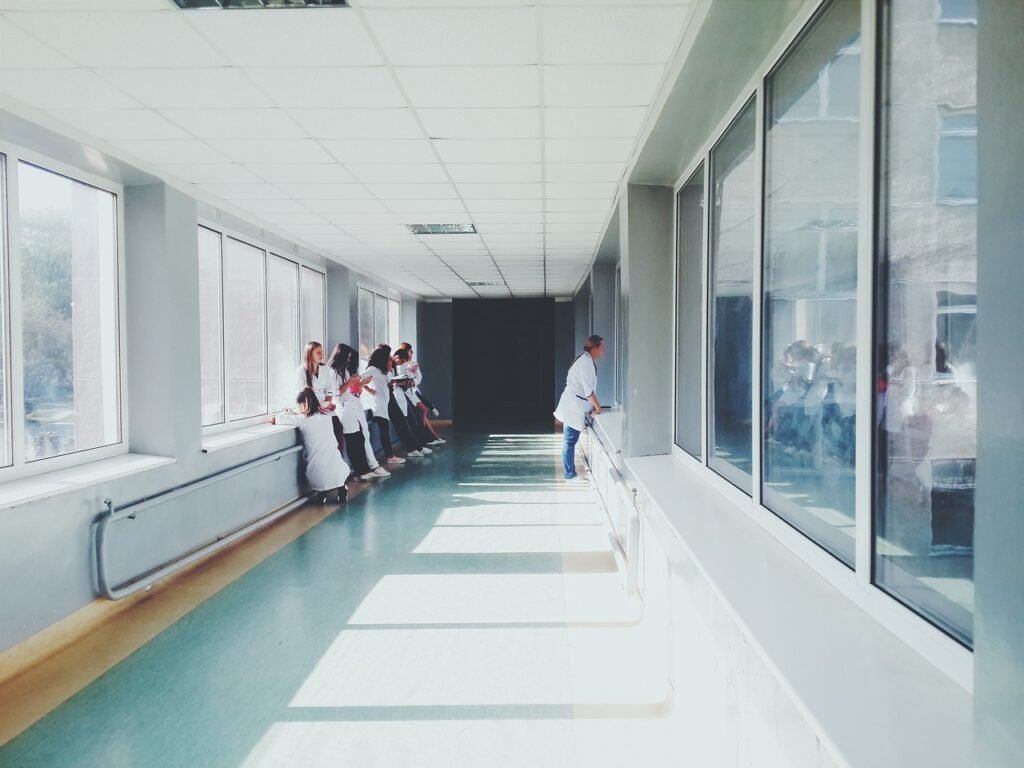
Cleaning may sound like a dirty word, but it’s an important part of many procedures. This is critical in hospital-based environments where medical staff and professional cleaning personnel must deal with the challenge of unknown liquids and increased amounts of infectious and dangerous particles that can be passed from patient to patient.
For those completing the Public Policy Certificate online, advances in cleaning technology, such as improvements in ultraviolet irradiation technology (UV-C) with AI, will highlight how hospital departments can address the complex problems arising as a result of the health crisis. Provides interesting insight into how well you are compliant. – including the impact of increased cleaning on hospital teams with reduced staffing capacity.
Dive into the dirty world of bacteria and understand how new and innovative technologies, such as ultraviolet radiation, can be used to address the challenges posed by modern infection control.
Bacterial evolution in a changing climate
Bacteria thrive in the right environment. Providing a damp space can allow spores to enter and mold to grow rapidly. This is a problem that often plagues homeowners across the country. In hospital environments, germs and infections are constantly being introduced by new routes: from patients, the clothes they wear, and even internal practices such as aggressive, repetitive cleaning that can lead to superbugs.
Superbugs may sound like something out of a cartoon, but they pose a real danger to the health of our communities. These bugs thrive in hospital environments, and traditional cleaning methods struggle to remove them from hospital environments. In fact, some estimates from the OECD suggest that on average nearly 300 people die from superbug infections in Australia each year. In fact, more Australians die from superbugs each year than die on Victoria’s roads. – but it hasn’t been as widely reported.
Disinfection complexity
Bacteria are evolving, but much can be said about how infection control has not evolved over the past half century. As the world becomes more interconnected and travel faster, traditional infection control solutions such as quarantine stations have been phased out and shut down.
This has caused significant problems during the recent coronavirus pandemic, where governments have had to quickly rebuild and restart quarantine facilities to contain infections from travelers. The reintroduction of isolation facilities to address infection control was a new process, but one that differs from the modern hospital environment, a medical sector struggling with increasing patient numbers and a shortage of medical facilities. It was praised in some circles as a way to manage the disease in a close-knit environment. space.
Unfortunately, building quarantine stations and reverting to 1950s biosecurity standards is not a realistic way to contain modern infectious diseases. Although current cleaning standards are effective, they can be incredibly time consuming and extremely expensive, especially when large amounts of cleaning agents are required.
To improve infection control, hospital administrators are developing new and potentially new methods that can be used in conjunction with existing hospital processes to save time, increase the effectiveness of infection control, and potentially save lives. The technology needs to be identified.
New Technology – UV-C Disinfection
As superbugs begin to wreak havoc in hospitals, medical device companies are finding new and innovative ways to support cleaning staff in dealing with the superbug threat. Companies such as Shimadzu Corporation are partnering with artificial intelligence companies like SILDO to spearhead UV irradiation technology powered by AI algorithms and machine learning.
Current cleaning solutions often use chemicals and often require manual processing. This can be particularly expensive, as the cost of producing specialized cleaning products to a high standard is often many times more expensive than traditional store-bought cleaning products.
Although UV rays are dangerous to unprotected human skin, the advantage of UV rays is that they are incredibly effective at destroying viruses on surfaces. In an environment where cleaning products are becoming increasingly less effective, innovative UV products offer interesting insights into the future potential of cleaning products.
For example, consider a technology that tracks the movement of users as they enter a sterile environment. Products such as object scanners supported by artificial intelligence can identify which areas the user has interacted with, so upon departure they can illuminate the affected surface with a UV-C laser using UV-C light (a type of short-wavelength ultraviolet light). You can disinfect it with No cleaners or cleaning agents required. In fact, recent research has found that UV-C may be effective in medical settings.
What does the future hold for these new technologies?
Exciting times lie ahead for new cleaning technologies in the hospital sector. It is clear that future hospital administrators will need to imagine a future where new cleaning technologies, such as UV-C, are used to complement or replace existing practices and procedures.
While superbugs and changes in the infection control environment pose active risks to patients and healthcare workers alike, it is critical that we continue to innovate in medical devices. It will be interesting to see what other innovations in infection control have been developed in recent years, providing an optimistic environment for tackling infectious diseases in the coming years.

